If you’ve been paying attention to homesteader circles and publications lately, you might have noticed a trend: ducks are quickly rising in popularity, particularly among people who have kept chickens for a while.
Chickens are great, but in comparison, ducks tend to be healthier, more self-sufficient, and even more resilient in bad weather, and just like chickens, they can still provide you with plenty of food.
Domestic duck breeds tend to be optimized for producing ample amounts of meat, lots of eggs, or both. But then again, you also have dual-purpose breeds which can ably give you plenty of each!
These versatile quackers are some of the best dual-purpose breed choices for homesteaders. We’ll get straight into our list below.
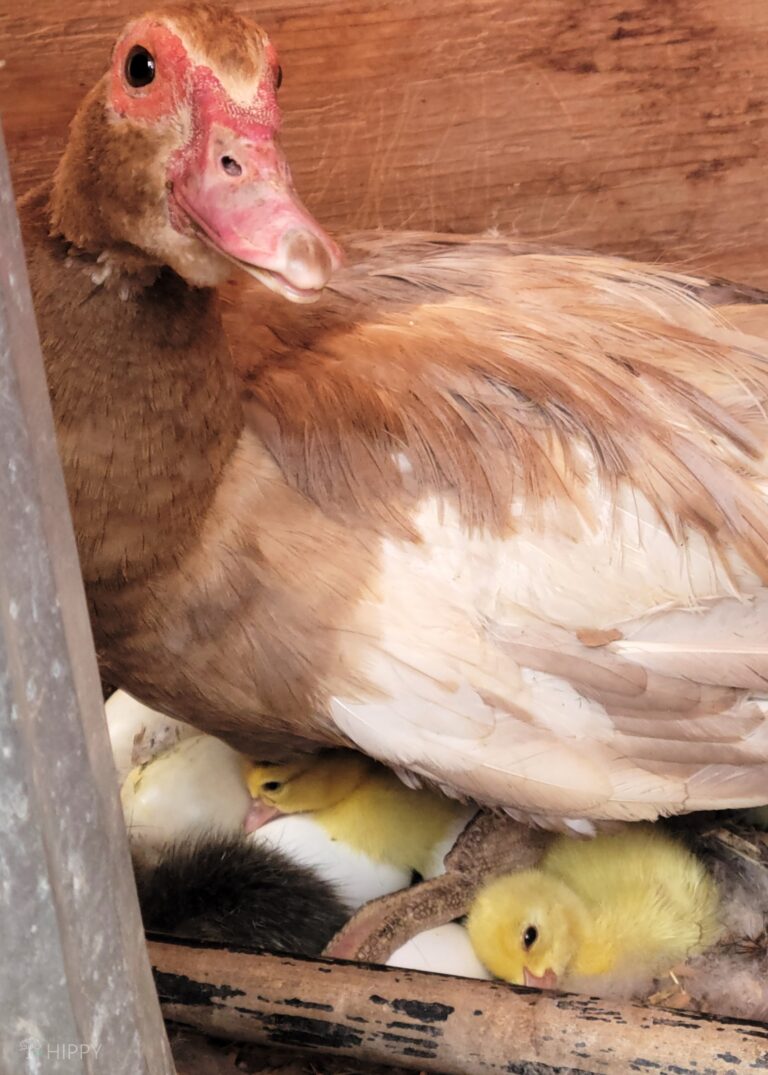
Muscovy
Muscovy ducks are instantly recognizable because of their large, stocky build, topping out at about 15 pounds for drakes, and also their unique fleshy red growths called caruncles that grow around their beaks and eyes.
One of the oldest domestic breeds known, they’re only moderately good egg layers, with productive hens laying no more than 150 eggs a year. Their meat, though, is remarkable for its tenderness and also for its intense flavor, and they are known to have very large carcass yields.
You’ll have to wait a little longer to get it though because they grow a little slowly. Muscovy ducks are also famous for their extreme hardiness and good health.
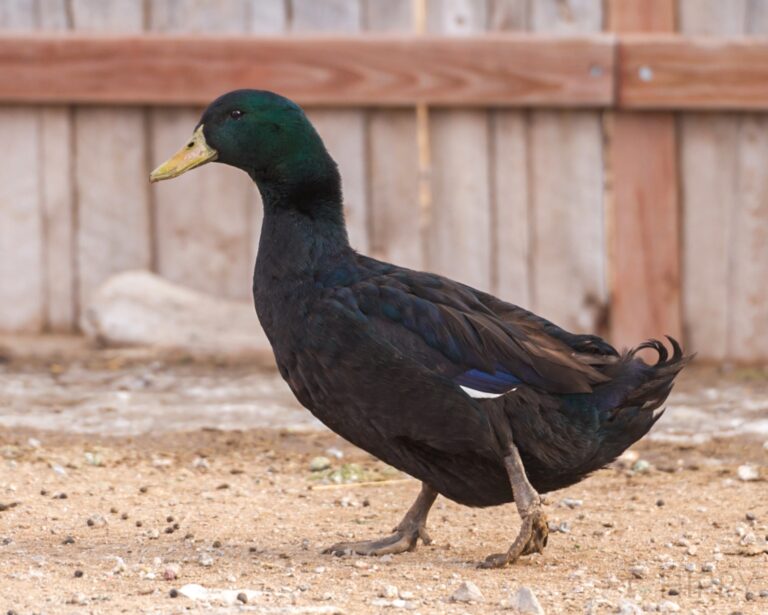
Cayuga
Hands down one of the most gorgeous ducks you’ll see anywhere, these iridescent blue, green, and black beauties have a truly interesting characteristic: they start out laying jet black eggs that will slowly lighten to a blue-green, then a gray and then a pearly off-white color as the laying season goes on! Amazing!
And you’ll get to enjoy plenty of those eggs because most hens will produce about 150 a year.
Cayugas are also commonly raised for meat and can give you plenty of it since they are on the hefty side with both males and females topping out at about 8 pounds. This is also one of the very best duck breeds if you live in a frigidly cold environment as they don’t mind it a bit.
Aylesbury
Another large breed, the heavy, broad-breasted Aylesbury is world-renowned for the quality of its meat.
Growing quickly and reaching a maximum weight of around 10 pounds, they are one of the most high-output meat breeds based on feed-to-gain ratio and carcass yield, and they are said to have a truly unique, sublime flavor that has made them the longtime darlings of high-end restaurants.
They’re also modestly good layers, with exceptional hens producing around 100 eggs a year; in any case, you’ll need a few hens just to supply your own family.
However, if they have a drawback it is the fact that they are critically endangered in the United States, though they are far more common and popular throughout Europe.
You’ll have to look far and wide to find them and probably spend more to get them, but if you want to raise a flock for meat and keep growing it you can do your part to keep them here in the US.
Indian Runner
One of the most interesting and certainly one of the cutest ducks on our list, Indian runners came by their name for obvious reasons.
They look like they are standing straight up, almost stretching, and they have a frantic walking pace when they are moving around. It’s hilarious to watch them sprinting around the yard and through the bushes!
But these ducks aren’t just kept for a lark, as they are surprisingly practical: young hens can lay between 200 and 250 eggs a year, and though they have a thin, light build that doesn’t yield much meat, it is certainly delicious and suitable for keeping your freezer full.
Indian runners are also particularly notable for being friendly, curious, and quiet, though they move around a lot more than other breeds, so it pays to have a larger property for them to get plenty of exercise. Also, these ducks are totally flightless and easy to keep contained.
Ancona
A truly utilitarian dual-use breed, Anconas are friendly, easy to handle, and highly productive.
You can expect anywhere from 200 to nearly 300 eggs each and every year, which makes them competitive with some of the best chickens in terms of egg output. Their eggs are small but extremely rich and have a light, scrumptious taste that you are sure to love.
These ducks are also known for producing lean, tender, and clean-tasting meat, making them a great gateway bird for folks who are used to chicken which is far less intensely flavorful compared to duck meat.
One thing to keep in mind is that Anconas are friendly but standoffish if you didn’t raise them yourself. Make sure they get plenty of socialization while they are ducklings if you don’t want them to run from you later in life.
Magpie
Named for the resemblance to the bird sharing their name, the striking white and black plumage of Magpies is undeniably attractive. Developed in the early 1900s for eggs, they’ve taken on a second life as a triple-use bird, one raised for eggs, meat, and also as a pet or ornamental.
Hens usually lay between 150 and 170 eggs yearly, though some exceptional hens might produce closer to 200.
These are smaller ducks, rarely weighing more than 5 ½ pounds, and so they don’t give up much meat, but their meat is said to be wonderfully fatty, rich, and delicious.
As mentioned, they can make great pets, but they need lots of handling and socialization while they are ducklings: if left to their own devices they tend to be cautious and flighty.
Khaki Campbell
Without question, the single best domestic duck breed to get if you want eggs aplenty, Khaki Campbells can lay a jaw-dropping 325 to 350 eggs a year for the first few years of their lives.
Even a small flock of these girls will keep you and your whole neighborhood buried under an avalanche of duck eggs!
Jokes aside, this breed also has a lot more to recommend it, including a famously good, patient attitude. These ducks love attention and they’re some of the very best for families with children.
Their meat isn’t known to be spectacular in terms of quantity or quality, but it is certainly delicious, and they’re more than capable of providing you with plenty even though they are on the smaller side.
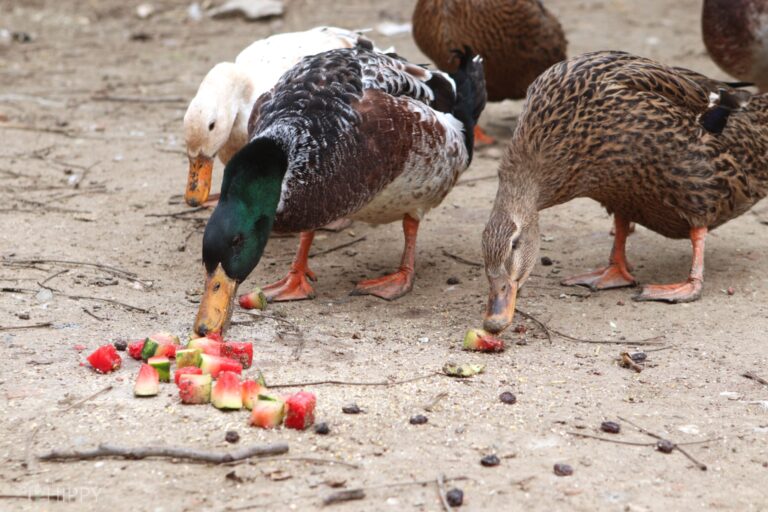
Mallard
Arguably the most iconic duck there is, based on appearance alone, these gorgeous green-headed birds are noteworthy for being the direct ancestors of many different domestic breeds.
They still exist in the wild, and simultaneously are a domestic breed under themselves, though there is considerable intermingling between wild mallards and escaped, feral ones.
One of the smallest ducks on our list, mallards weigh at most about 3 1/2 pounds, and that’s in the case of large drakes. Hens are even lighter!
Their meat can make for a fine duck dinner, though obviously you won’t get much of it. They produce many more eggs, however, with females laying about 140 a year, but you’ll have to stay on top of collection because they tend to be broody.
One of the best things about Mallards is their unbelievably good health. Considering they are not purebred ducks, and still very much wild in many regards, their genetics are quite strong.
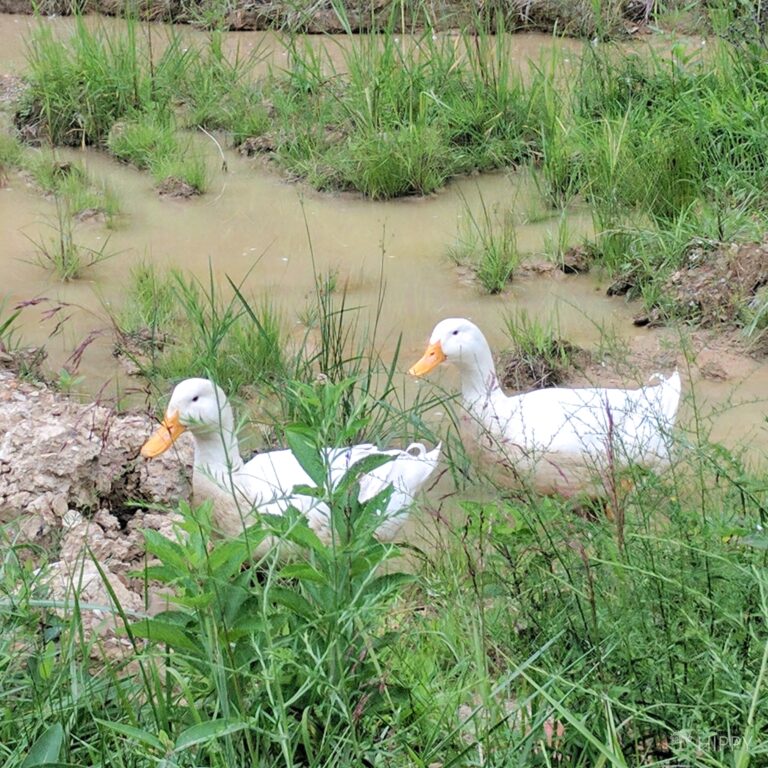
Pekin
Pekin ducks are the most popular domestic ducks in the United States, and with cause!
Aside from growing to a nice, plump size of between 8 and 9 pounds, they are also very good layers, with hens producing anywhere from 200 to 300 large white eggs yearly.
These ducks are also famous for their calm and easy-going demeanor, making them easy to handle or even beginning duck owners.
They also tend to be particularly robust and not prone to suffering from any health problems. However, they need a little more space compared to some other breeds – though they can tolerate confinement comfortably for short intervals. Always a good choice!
Saxony
Saxonys can be a great choice for a backyard flock because they are quiet, mild-mannered, and don’t need too much space even though they are a beefy, heavy-bodied bird. They’re also gorgeous, having either mottled buff and gray coloration or steely blue feathers.
This is a nominally dual-purpose breed, and though they don’t lay too many eggs compared to others on our list, maxing out at about 175 yearly or a little more, they have a relatively short laying season, meaning they’ll crank out large batches in just a couple of months.
Today, though somewhat uncommon in the United States, they are a truly popular breed for eating because of their high carcass yield and delicious, tender fine-grained meat.
Silver Appleyard
A gorgeous and fascinating domestic breed, the Silver Appleyard possesses, as you might expect from the name, glorious silver and white plumage giving them a unique look that you won’t forget.
Famously friendly and excellent foragers, these ducks are known for their independence, uniformly good health, and high production of meat and eggs.
Females lay anywhere from 210 to 250 eggs a year, and with maxing out at about 8 pounds you’ll get plenty of meat from each bird you slaughter.
Like some others on our list, they are currently considered threatened in the United States, though they are definitely out there. I can highly recommend them, so if you’re willing to find a good hatchery or breeder, you’ll be glad you did!
Welsh Harlequin
A Welsh breed that has been around since the first half of the 20th century, Harlequins are mild-mannered, prolific breeders, and excellent mothers, meaning they are a wonderful option for a true family duck.
As expected, they are great layers, with hens cranking out around 250 eggs a year. Although they are of medium build, the yield of meat is pretty good for their size, averaging between 5 and 6 pounds.
However, there are some downsides you’ll need to work to manage with these wonderful birds. They are the duck equivalent of Orpingtons, meaning they are notoriously broody.
If you don’t stay on top of egg collection hens will quickly become intent on hatching them and then the flow of eggs will stop. They’re also, sadly, critically endangered in the US and the UK, so just tracking them down to establish a flock of your own is going to be a chore.
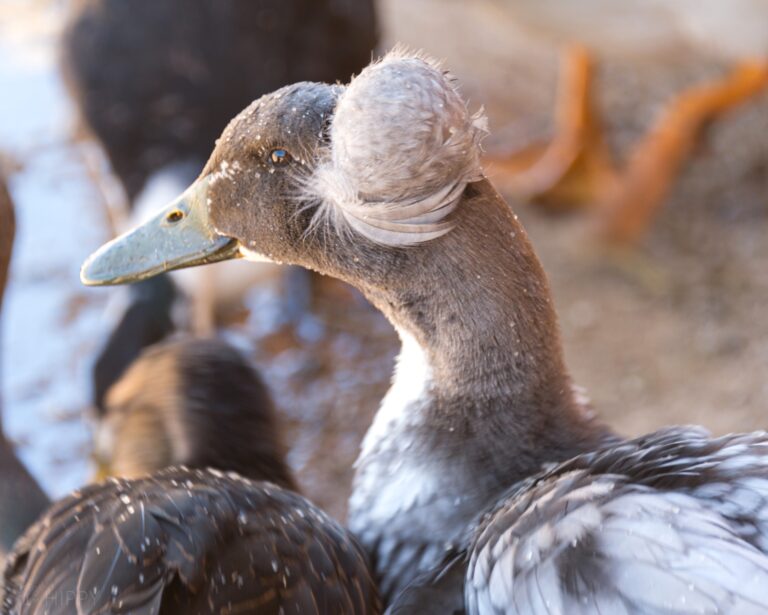
Swedish Blue
A highly popular European breed, the Swedish Blue, and its close relative Swedish Black, are becoming increasingly popular here stateside. Again, it’s easy to see why!
These birds are superb foragers and love eating insects, meaning if you have a sizable property that is rich with wildlife, they can supply much of their own food.
They are pretty good layers, producing an average of 150 eggs a year, and are also a fine table bird. They aren’t very big, usually weighing between six and seven pounds, but they grow quickly and are able breeders, meaning you’ll always be able to expand your flock as needed.
Buff Orpington
Not to be confused with the chicken breed of the same name, Buff Orpington ducks have, just as the name says, a wonderful, golden tan buff plumage.
Also like those other Orpingtons, they are excellent layers, turning out anywhere from 150 to 200 or so eggs yearly with unwavering regularity.
These ducks are likewise famously friendly, docile, and easy to handle. They’re also one of the most popular ducks at poultry shows and competitions thanks to their genial nature and beautiful color.
Although their meat is not as remarkable as their other characteristics, it’s still tasty, tender, and worth harvesting. Larger specimens can provide you with several pounds per carcass.
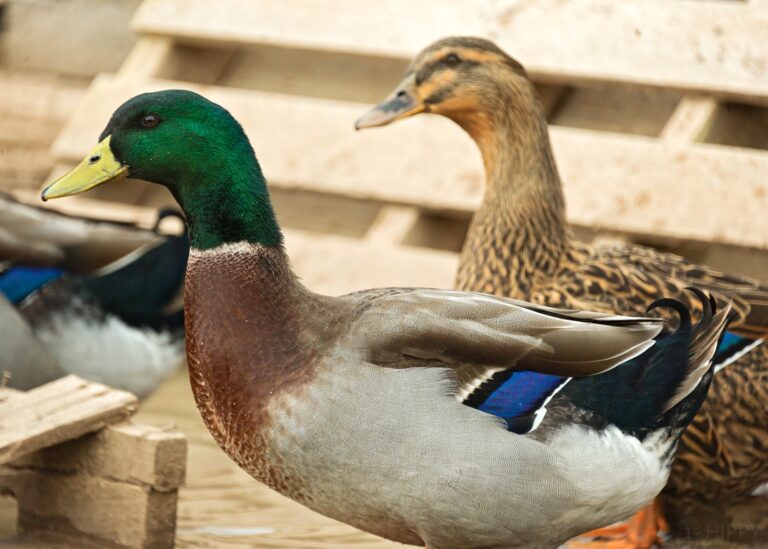
Rouen
Incredibly good-looking, tall, and large, Rouens are an excellent dual-use duck breed. They’re also notable because hens are only slightly smaller than drakes, with the average weight of both being about 10 pounds and drakes topping out at 12 pounds.
These ducks are a favorite among fanciers and are a popular ornamental and pet breed because of their sharp good looks, but they are nonetheless a practical breed for homesteaders who want plenty of eggs and lots of tasty, tender meat.
Your average hen will lay between 65 and 150 eggs yearly. Like the Muscovy seen elsewhere on our list, these ducks are a little slow-growing and usually ready to butcher at around 7 months of age.
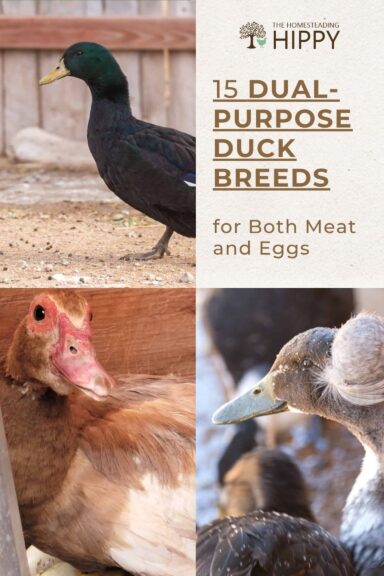
Tim is a farm boy with vast experience on homesteads, and with survival and prepping. He lives a self-reliant lifestyle along with his aging mother in a quiet and very conservative little town in Ohio. He teaches folks about security, prepping and self-sufficiency not just through his witty writing, but also in person.
Find out more about Tim and the rest of the crew here.
